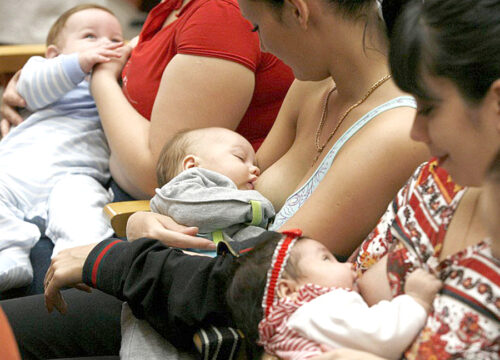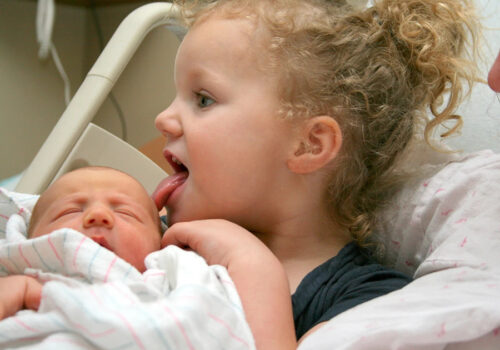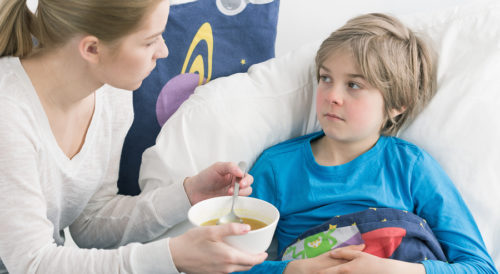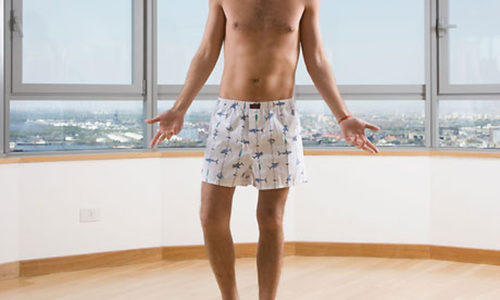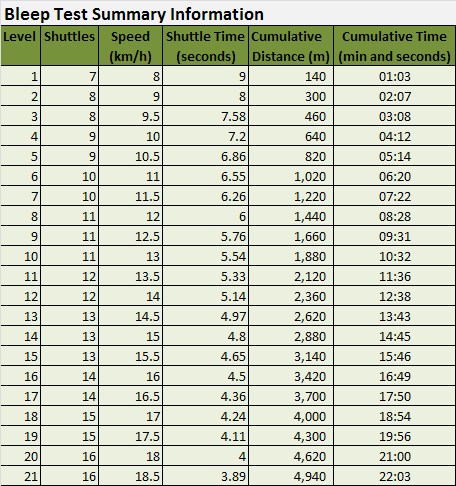Clinical
Conditions
- ADHD and Puberty – Part Two
- ADHD, ADD, HK, ADHK, LDHK, MBD, Hyperactive, “Slow”
- ADHD, Hyperactivity: Don’t JUST Take My Word For It
- ADHD: Treatment Followup – Lifelong Learning
- Amblyopia and Developmental Dysplasia of the Hip
- As Much As You Want To Know About Autism – Autistic Spectrum Disorder (ASD)
- Autism: Autistic Concert Pianist
- Best Treatment For ADHD: Success In Something
- Childhood Diabetes and a New Medicine – Part 1
- Childhood Diabetes and a New Medicine – Part 2
- Childhood Diabetes Update
- Hyperactivity and Puberty – “ADHD on Testosterone”
- Hyperactivity Treatment: Cognitive Training, Medication or Both
- Hyperactivity Treatment: Is There ANYTHING That Really Works?
- Hyperactivity Treatment: What Really Works… Really
- Hyperactivity: First, The Diagnosis
- Hyperactivity: The Boy or Girl – The Patient
- Leg Pain on One Side in Children – Perthes Disease
- New Guidelines: Autism, Flu and ACL Tears
- Night Terrors and Nightmares
- Speech “Non-fluency” – Stammering, Hesitancy, Delay, and Stuttering in children.
- The Charles Bonnett Syndrome: An Under-reported Phenomenon
- To Understand Autism
- What We Know About Autism
Doctors
- #40 Lawrence (Larry) Einhorn (1942-)
- 10 Medical Breakthroughs Unaccepted At First – Part One
- 10 Medical Breakthroughs Unaccepted At First – Part Three
- 10 Medical Breakthroughs Unaccepted At First – Part Two
- 15 Accidental Medical Discoveries – Part II
- 15 Accidental Medical Discoveries – Part III
- 50 Influential Docs in History: Nikolay Ivanovich Pirogov (1810-1881)
- Accidental Medical Discoveries – New Series
- Charles D. Kelman
- Cicely D. Williams
- Communication With Your Doctor – when things don’t seem to be going right
- Cost Effective Medicine – why can’t we seem to find it?
- Dame Cicely Saunders – Nurse, Doctor and Founder of Modern Hospice
- Doctor Helen Brooke Taussig – World Renowned Cardiologist
- Doctor Henry Gray (1827-1861) – Anatomist, Author, Devoted Uncle
- E. Donnall Thomas, Joseph Murray-Most Influential Doctors
- Elisabeth Kübler-Ross
- Elizabeth Blackwell
- George Papanicolaou: Cytopathology, Cancer
- Grandma’s Who Haven’t Seen Measles
- James Parkinson: Social Activist and Advocate, Parkinson’s Disease and Palentology
- John Snow: Water Pumps, Cholera and Epidemiology
- Joseph Kirsner: Colon Cancer, IBS, Educator, Doctor
- Mahmut Gazi Yaşargil: Micro-Surgery, Neurologic Pioneer
- Medical Breakthroughs, Unaccepted, Rejected and Attacked (at first)
- Most Influential Doctor: David L. Sackett – Evidence-based Medicine
- Obscure Medical Terms
- Robert Koch: Modern Bacteriology
- Stanley Dudrick: Total Parenteral Nutrition
- Stanley Prusiner: Neurodegenerative Diseases
- Top 50 Most Influencial Doctors of All Time: Intro/Index
- Victor McKusick: Medical Genetics
- Virginia Apgar: Blue Babies
- Watson, Crick, DNA, Nobel Prize
- When Doctors Don’t Do A Good Physical Exam – Patients Loose
- William Harvey – Discovery of Circulation
- Yogi Berra’s Tips For Practicing Medicine and Parenthood
- Zora Janžekovič – Pediatric Burn Pioneer
Illness
- 10 Travel Diseases to Consider – Part 2
- 10 Travel Diseases to Consider Before and After the Trip
- 2014: New Medical Guidelines Intro/Index
- Adolescent Acne – diagnosis and treatment methods
- Alcohol Intoxication in Children
- Allergy (atopy) in infants, children and adolescents
- Allergy: Spring Hay Fever and Otherwise
- Appendicitis
- Attention Deficit Hyperactive Disorder (ADHD) Series: Intro/Index
- Autism: Autistic Concert Pianist
- Back To School: Series Intro/Index
- Bed Wetting (Enuresis) – 1
- Bed Wetting (Enuresis) — Part 2
- Cardiac Arrest: Commotio Cordis – Prevention, Return To Play
- Cardiac Arrest: Commotio Cordis – Treatment and Prevention
- Child Cardiac Arrest: Intro/Index
- Child Diseases Parents Should All Know About – Part 1
- Child Diseases Parents Should All Know About – Part 2
- Child Diseases Parents Should All Know About – Part 3
- Child Diseases Parents Should All Know About – Part 4
- Child Diseases Parents Should Know – Part 10
- Child Diseases Parents Should Know – Part 5
- Child Diseases Parents Should Know – Part 6
- Child Diseases Parents Should Know – Part 7
- Child Diseases Parents Should Know – Part 8
- Childhood Rashes and Numbered Diseases: Intro/Index
- Children’s Back To School Medical Problems – Part 1
- Children’s Back To School Medical Problems – Part 2
- Children’s Bacterial Skin Infections
- Common Foreign Bodies Found In Children and Teens
- Common Pediatric Recreation and Sport’s Injuries – Part Two
- Common Pediatric Sports and Recreational Injuries – Fractures
- Conjunctivitis (Pink Eye)
- Constipation and Soiling in Children
- Difference Between Flu and Colds
- Diseases All Parents Should Know Series: Intro/Index
- Diseases Parents Should Know, 9 – Flu, Impetigo, Ringworm
- Drugs and Breast Milk – Alcohol Withdrawal
- Five Things You Should Know About Concussion and Contact Sports
- Head Injury in Children
- Head Lice and Tea Tree Oil
- Heat Illness In Children: Heat Stroke, Rash, Exhaustion
- Hospitalized Newborns – One
- How to Take A Temperature: Child
- Infant Colic
- Kawasaki Disease: A Parent’s Guide
- Keeping Sick Kids Home from School or Daycare
- Leg Cramps in Children
- Marijuana Series: Intro/Index
- Marijuana: Test What You Know
- Medical Marijuana
- Medical Marijuana – What, If Anything, Is it Good For?
- Medicine: Do Nothing Whenever Possible
- Meningitis In Children
- Migraine Headache in Children
- Mosquito Illnesses – Zika, Dengue and Others
- New Concussion Biomarker Possible For Children’s Head Injuries
- New Guidelines: Autism, Flu and ACL Tears
- New Kids Health Guidelines In 2014
- Numbered Diseases of Childhood: FIFTH Disease – Erythema Infectiosum
- Numbered Diseases of Childhood: FIRST Disease – Measles
- Numbered Diseases of Childhood: FOURTH Disease – Filatov-Dukes’ Disease
- Numbered Diseases of Childhood: Rashes
- Numbered Diseases of Childhood: SECOND Disease – Scarlet Fever
- Numbered Diseases of Childhood: SIXTH Disease – Roseola
- Numbered Diseases of Childhood: THIRD Disease – Rubella
- Otitis Externa: Swimmer’s Ear, More Than An Annoyance
- Parenting: Fever is Your Friend
- Parenting: How To Give Medicine To A Child
- Poison Ivy, Oak and Sumac in Children
- Power Lawn Mower Injuries in Children
- Respiratory Hazards of Wood Stoves
- Scabies “Seven Year Itch” – a Comeback in Children
- Scabies in Children
- Spinal Taps in Children
- Stings and Bites in Children
- Sudden Cardiac Death in Child Athletes
- Summer Childhood Illnesses and Injuries – Part 2
- Sunburn in Infants, Children and Adolescents
- Ten Travel Diseases: Intro/Index
- Tonsillectomy – part two
- Tonsillectomy – Risks and Benefits
- Torn Anterior Cruciate Ligament (ACL) – Lachman Test
- Treating Children’s and Teen’s Colds
- Treating Cough in Infants, Children and Teens
- Treating Fever in Infants, Children and Teens
- Urinary Tract Infections in Children
- What’s Eating You? Bedbugs, Mites and Lice
- What’s Eating You? Ticks and Fleas
Parenting
- A Good Book is Like A Secret Door
- Advice to Ignore, Things to Remember and Stuff Not To Stress About – Part 3
- Am I Ready To Have Sex?
- Children’s Ability To Read
- Children’s Self Esteem
- Choose Your Battles With Teens Over Hair and Clothing
- Choosing a Name For a Child
- Discipline in a Non-Confrontational Parent
- Discipline Series: Intro/Index
- Discipline, Parents, Kids and “Natural Consequences”
- Doctor’s Talking About Puberty and Sex
- Feeling – A Special Sense
- Golden Rule of Parenting: Sleeping Through The Night
- Growing Up – When Did THAT Happen?
- Healing Hugs – Sometimes the Best Medicine
- Instilling Concern and Respect For Others In Children and Teens
- Julie Lythcott-Haims: How to raise successful kids — without over-parenting
- Just A Part Time Kid – Divorce Part 1
- Just A Part Time Kid – Divorce Part 2
- Medicine: Do Nothing Whenever Possible
- Most Important Parenting, When It Appears The Least
- Nose Picking In Public a Habit To Break
- Parenting About Sex, Pressure and Promiscuity
- Parenting About Sex, Pressure and Promiscuity Series: Intro/Index
- Parenting Advice to Ignore Series: Intro/Index
- Parenting Advice to Ignore, Things to Remember and Stuff Not To Stress About – Part 1
- Parenting Advice to Ignore, Things to Remember and Stuff Not To Stress About – Part 2
- Parenting Children and Teens to Be Achievers
- Parenting Is Saying No
- Parenting: 5 Dangerous Things You Should Let Your Kids Do
- Parenting: A Good Night’s Sleep, Infant Sleep Training
- Parenting: An Astronauts Guide To Optimism
- Parenting: Attitudes – Unintentional Learning
- Parenting: Be selfish
- Parenting: Dealing With Bad “Tween” Behavior
- Parenting: Discipline
- Parenting: Draw your own circles
- Parenting: Fever is Your Friend
- Parenting: Four bad ages
- Parenting: Good behavior is expected, not rewarded
- Parenting: Good Night’s Sleep
- Parenting: How To Give Medicine To A Child
- Parenting: Loss and Grief – My Velveteen Rabbit
- Parenting: My Malaprop Mom
- Parenting: Never Trust Newborns
- Parenting: Picky Eaters
- Parenting: Seventh Grade is a pivot point
- Parenting: Take Credit For The Good Things About Your Children, Blame Others For The Bad
- Parenting: Talk To Strangers
- Parenting: The Two Greatest Barriers To Parenting – Money and Education
- Parenting: Toilet Training Is Not a Parenting Test
- Real Pediatrics: Dr. Gregory Alan Barrett
- School PHOBIA
- Sibling Rivalry
- Sleep Problems: Older Children, Toddlers, Stumbling Blocks
- Stress In Children
- Teaching Teens About Healthy Relationships
- Teenagers: Maturing and “THE Talk”
- Telling Truth or Lies to Children: Parenting
- The Simple Power of Hand Washing
- Three Magic Questions of Breastfeeding
- Traveling With Children – a Secret Weapon
- When Children Travel Alone
- When I Grow Up – I Wanna Be Happy
- When Should School Start For Teens
- Why Kids Today Don’t Know How Much Fun a Road Trip Can Be
- Why So Many Illnesses In My Child
- Yogi Berra’s Tips For Practicing Medicine and Parenthood
Wellness
- Advice to Ignore, Things to Remember and Stuff Not To Stress About – Part 3
- Am I Ready To Have Sex?
- An Eye Exam On A Smart Phone?
- Body Odor
- Boys and Body Image
- Breastfeeding – Recent Findings and Recommendations
- Breastfeeding and Human Milk
- Breastfeeding Series: Intro/Index
- Child/Teen Immunization Schedule, 2014: Changes You Should Know
- Childhood Immunization Schedule: Intro/Index
- Childhood Immunization: Updated 2013 guidelines
- Children’s Athletic Warmups
- Children’s Fitness: The Bleep Test
- Children’s Health and Fitness: Intro/Index
- Children’s Health: Less Healthy Than 50 Years Ago
- Children’s Jogging
- Children’s Sleep: Series Intro/Index
- Children’s Sports
- Children’s TV Screen Time: Consequences, Limits, Interventions – Part 1
- Dental Care of Children and Teens – causes and prevention of caries (cavities)
- Dental ID of Children
- Do You Take Your Body For Granted
- Emergency Medical System (EMS) – Prevention
- Health Proverbs: Where Did They Come From?
- How To Kill A Child Athlete
- Immunization Safety Series: Intro/Index
- Immunization Schedule: Birth to Eighteen
- Immunization v. Vaccination: A Story of Gullibility, Fear, Despicable Avarice and Scams
- Immunization v. Vaccination: A Story of Gullibility, Fear, Despicable Avarice and Scams – Part 2
- Infant Circumcision
- Infant Circumcision Now Both Advised and Safer
- Innocent Heart Murmurs in Children
- Internet Vaccination Advice Nearly Killed Their Son
- Measles: The Real Evidence
- Meditation For Kids and Time-Outs
- More Medical Proverbs – Do They Work?
- New Concussion Guidelines For Children’s Sports
- Obesity Series: Intro/Index
- Parenting About Sex, Pressure and Promiscuity
- Parenting Advice to Ignore, Things to Remember and Stuff Not To Stress About – Part 1
- Parenting Advice to Ignore, Things to Remember and Stuff Not To Stress About – Part 2
- Parenting: Four bad ages
- Parenting: Never Trust Newborns
- Parenting: Toilet Training Is Not a Parenting Test
- Puberty and Underwear: Boxers, Briefs or Commando?
- Puberty Series: Intro/Index
- Puberty: Psychological Stages
- Puberty: Tanner Stages – Boys
- Puberty: Tanner Stages – Girls
- Puberty: Tanner Stages and Growth
- Reasons Why Parents Choose Not To Immunize Their Children
- Safe Sleep For Infants: SIDS & SUIDs
- Sexual Attraction and Orientation
- Teenagers: Maturing and “THE Talk”
- The Pediatric Physical Examination
- Three Magic Questions of Breastfeeding
- Vaccine Information Statements (VISs)
- Vintage Proverbs: Intro/Index
- What’s Wrong With Our Food System: Birke Baehr
- Why We Need a “Good Night’s Sleep”
- Yoga For Children and Stress Reduction
- You’ve Come A Long Way Baby
Commentary
FAQ
Link
Recent News
Resources
Series
/* --------------------------------------------------------------------------------------------- END added code trial ------------------------------------------------------------------------------------------------ */Showing posts from: Wellness
Parenting: Never Trust Newborns
Parenting: Toilet Training Is Not a Parenting Test
Teenagers: Maturing and “THE Talk”
Parenting: Four bad ages
Vaccine Information Statements (VISs)
There may not be a lot, or very often (proportionally); but, once in a while I run across a bit of “something good” on the internet.
Such is the case with a whole new section of what I would call “research summary statements” about vaccines and vaccinations from the leading research analysis team in the US, or perhaps even the world!
No, not the CIA, NASA or even Space-X – Read more →
More Medical Proverbs – Do They Work?
We’ve already talked about medical proverbs such as “cold hands, warm heart,” “feed a cold, starve a fever,” “drink eight glasses of water a day,” “cigarettes will stunt your growth” and that “apple a day”… thing.
But there are some we left out because the list was getting a bit long for one sitting. I’m going to take another shot at listing a few more, some from the “dawn” of medicine and others which are beginning to hit up against the way doctors are practicing medicine these days!
Read more →
Health Proverbs: Where Did They Come From?
If nothing else, doctors are a bit concrete. We love boxes, categories, lists and most of all… answers!
So, things a bit askew, catawampus, off kilter or out of place make the average physician a bit nauseous if not outright wonky and catapulted into a search for the rationale. You give us an aphorism and we’ll design a research study.
Read more →
Vintage Proverbs: Intro/Index
In the U.S., old Ben Franklin published a series of articles in his Old Richard’s Almanac that, if he didn’t come out right and say it, people took as the truth.
Perhaps because a lot of them had their roots in vintage manuscripts like the bible and early writings of the pioneering healers/doctors throughout time.
How about it? Should we take sayings like: “early to bed…”, “an apple a day…”, “pay attention to seasons…”, “doctors’ best book is the patient”, “health checks don’t add anything meaningful…”, “eight glasses of water…”, “cold hands…”, “cigarettes stunt your…” and “feed a cold…” as truth or with a huge grain of salt?
Let’s do some proverb-busting!
4 Posts in "Proverbs" Series
- Proverbs Series: Intro/Index – 1 Oct 2018
Vintage proverbs: are they true or, like some, just "old wives' tails?" - Heart, fever, smoking, water and apples – 6 Oct 2018
"An apple a day," "cold hands, warm heart," "feed a cold, starve a fever." and "cigarettes stunt your growth" are all medically related proverbs (myths)—are they true? This curated series of posts all deal with proverbs of a kind, which are explored and declared either "confirmed" or "busted." - Seasons, patient learning, remedies, eating and health checks – 1 Dec 2018
This post continues our exploration of medical proverbs only now let us turn our attention to doctors and what they do. Are physical exams really necessary anymore? Should doctors really pay attention to the seasons? In true Mythbuster fashion, let's confirm or bust them. - sleep and health – 18 Feb 2019
Previous posts have discussed medical proverbs but there is one glaring omission that needs to be addressed: does "early to be and early to rise REALLY make you healthy, wealthy and wise"?
Puberty and Underwear: Boxers, Briefs or Commando?
I answered a question of a 16 year-old patient who had been the subject of some school-girls’ highly personal and intrusive questioning: “What kind of Underwear do you wear? boxers, briefs or commando?” He wrote into an answer-line: “Which is best?” and I told him I’d think about it and see if there was an informed answer that covered all the Tanner Stages.
Read more →
Children’s Fitness: The Bleep Test
Assessing Children’s Health and Fitness
The “bleep” test, the “beep” test, the “Multistage Fitness Test” (MSFT)
The test had its beginnings in Britain to quantify the fitness level of children and sports team participants. Its popularity has grown world-wide and it is now used by major league teams as a requirement of participation, not to mention military units, the FBI, schools and other venues where fitness is a job requirement. Many other “clones” of the test have been developed (such as the yo-yo test) but all of them are pretty much the same measurement of the body’s ability to utilize oxygen and get it to its cells.
For those of you who wish to have a copy of the test to use in your family, an MP3 file is downloadable below.
AUDIO TAPE
The “game” or “exercise” is easy to set up and just as easy to perform (except for the running part) but it does need some explanation to those you want to administer it to. The tape uses “beeps” to time the exercise. You start the tape and don’t stop it until the last person taking the test has dropped out. Ostensibly to the highest level it takes just over 20 minutes; but no one has been verified as completing it even though several have claimed to do so. Most fit individuals reach their maximum around 10 minutes, only professional level athletes make it above level 12 or so (there are 21).
Give the instructions, start the tape, wait for the first set of three beeps and runners begin at a pace “just fast enough” to arrive at the cone where they wait until the next beep sounds and they start back. They run back and forth at the same pace waiting at the end for the next beep until another series of three beeps indicate the “next level” and the pace picks up. So, it’s back and forth to the time of single beeps until three beeps announces the next level of faster pace.
The “players” continue until maximal effort is reached with encouragement from the onlookers. The idea is to keep going until they have been “late for the beep” two times in a row and their score becomes the last level that they reached on time. Everyone in the family will be different and playing the game will improve both the score and fitness. Here is a video of a college professor teaching students how to administer the test.
VIDEO
So, what to expect at the various ages for “fitness?” Barring preclusive physical impairments here are the charts for boys and girls 9 through 17. Children younger than nine can run to the beeps but really shouldn’t do so under pressure. Developing a love for how their bodies feel when they’re fit and active should be the FIRST agenda. Nine is early enough to begin the challenge of competing with one’s self for improvement as the SECOND agenda. Physical competition against others should be left for sometime AFTER 12 as the THIRD agenda.
PERFORMANCE AT AGE LEVELS
Boys
| Percentile | < 5 | 5-20 | 20-40 | 40-60 | 60-80 | 80-95 | >95 |
|---|---|---|---|---|---|---|---|
| Age | very poor | poor | fair | average | good | very good | excellent |
| 9 | < 2/2 | 2/2-3/4 | 3/5-4/4 | 4/5-5/4 | 5/5-6/4 | 6/5-7/7 | > 7/7 |
| 10 | < 2/2 | 2/2-3/5 | 3/6-4/5 | 4/6-5/5 | 5/6-6/6 | 6/7-8/1 | > 8/1 |
| 11 | < 2/2 | 2/2-3/6 | 3/7-4/7 | 4/8-5/8 | 5/9-6/10 | 7/1-8/6 | > 8/6 |
| 12 | < 2/2 | 2/2-3/8 | 4/1-5/1 | 5/2-6/4 | 6/5-7/6 | 7/7-9/3 | > 9/3 |
| 13 | < 2/4 | 2/4-4/2 | 4/3-5/6 | 5/7-6/9 | 6/10-8/3 | 8/4-10/1 | > 10/1 |
| 14 | < 2/6 | 2/6-4/5 | 4/6-6/1 | 6/2-7/4 | 7/5-8/9 | 8/10-10/9 | > 10/9 |
| 15 | < 2/7 | 2/7-4/7 | 4/8-6/3 | 6/4-7/7 | 7/8-9/2 | 9/3-11/3 | > 11/3 |
| 16 | < 2/8 | 2/8-4/9 | 5/1-6/6 | 6/7-7/10 | 8/1-9/6 | 9/7-11/8 | > 11/8 |
| 17 | < 3/1 | 3/1-5/2 | 5/3-6/8 | 6/9-8/3 | 8/4-9/9 | 9/10-12/1 | > 12/1 |
Girls
| Percentile | < 5 | 5-20 | 20-40 | 40-60 | 60-80 | 80-95 | >95 |
|---|---|---|---|---|---|---|---|
| Age | very poor | poor | fair | average | good | very good | excellent |
| 9 | < 2/2 | 2/2-3/1 | 3/2-3/8 | 4/1-4/6 | 4/7-5/4 | 5/5- 6/6 | > 6/6 |
| 10 | < 1/7 | 1/7-3/1 | 3/2- 3/8 | 4/1-4/7 | 4/8-5/6 | 5/7- 6/8 | > 6/8 |
| 11 | < 1/6 | 1/6-2/8 | 3/1- 3/8 | 4/1-4/8 | 4/9-5/8 | 5/9-7/1 | > 7/1 |
| 12 | < 1/5 | 1/5-2/8 | 3/1-4/1 | 4/2-4/9 | 5/1-5/9 | 6/1-7/3 | > 7/3 |
| 13 | < 1/5 | 1/5-3/1 | 3/2-4/1 | 4/2-5/1 | 5/2-6/1 | 6/2- 7/5 | > 7/5 |
| 14 | < 1/5 | 1/5-3/1 | 3/2-4/1 | 4/2-5/1 | 5/2-6/2 | 6/3- 7/6 | > 7/6 |
| 15 | < 1/5 | 1/5-3/12 | 3/2-4/2 | 4/3-5/2 | 5/3-6/3 | 6/4-7/7 | > 7/7 |
| 16 | < 1/5 | 1/5-3/1 | 3/2- 4/2 | 4/3-5/2 | 5/3-6/3 | 6/4-7/8 | > 7/8 |
| 17 | < 1/5 | 1/5-3/1 | 3/2-4/2 | 4/3-5/3 | 5/4-6/4 | 6/5- 7/9 | > 7/9 |
Finally, if you’re still with me, here is a summary chart of the entire test levels and shuttles on each level. It shows the relative speed the child is running (km/h) at each level as well as times and distances.
Children’s Health: Less Healthy Than 50 Years Ago
Your grandparents and great-grandparents are always the shortest ones in all your family photos, right? It’s the same with all of us.
Your kids are taller, better fed and wealthier than your grandparents; so, why are today’s children LESS healthy than 50 years ago? Children’s health has actually gotten worse!
Read more →

